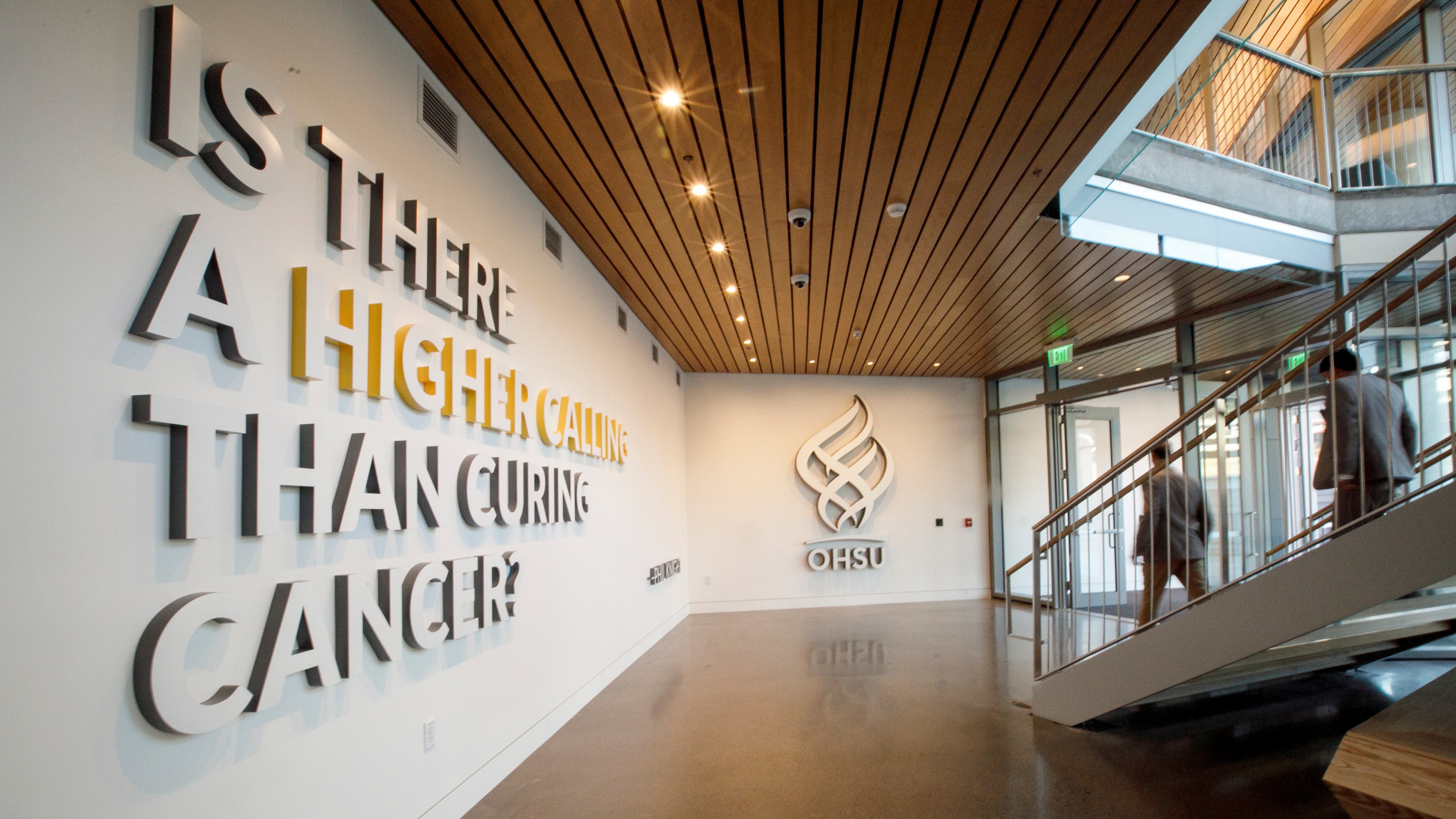When Oregon Health & Science University announced last week that Phil and Penny Knight had pledged a mighty $2 billion to its Knight Cancer Institute, the school noted that the cancer institute, given the magnitude of its mission, would become a “self-governed entity within OHSU.”
What this meant in practice was not entirely clear. OHSU is a quasi-public institution, generally subject to public records law, and with a board of directors appointed by the governor. When, not long ago, the OHSU Knight Cancer Institute erected a “state-of-the-art” research facility on the banks of the Willamette, Oregon taxpayers largely footed the bill.
Some such taxpayers may thus be wondering how this new self-governing cancer institute will work in practice. And it appears some core matters remain unresolved.
“The governance structure of the Knight Cancer Institute is currently under development and has not been fully determined at this time,” wrote Elisabeth Shepard, a spokesman for Gov. Tina Kotek, when asked Tuesday about what kind of public oversight, if any, would apply to the cancer institute under the new regime.
Some high-level points have been established, however. With the injection of cash, OHSU has said it would come a new entity—the Knight Cancer Group.
The Knight Cancer Group would have its own board, lead the Knight Cancer Institute and manage OHSU’s cancer services. And the Knight Cancer Group’s inaugural president would be Brian Druker, the celebrated scientist who had led the OHSU Knight Cancer Institute for years before stepping down in late 2024 amid his stated dissatisfaction with OHSU’s research environment.
Asked about the purpose of the cancer institute’s proposed new structure at the event announcing the $2 billion gift last week, Druker said the change would allow it to be more efficient and pay competitive wages as it seeks national talent.
WW emailed several questions to OHSU this week about the new regime. For example: What kind of entity will the Knight Cancer Group be? Who will appoint its board? Will its internal dealings be, like those of OHSU, generally subject to Oregon public records law? On these and other matters, the school offered little to no clarity.
“There are many details to be worked out regarding the Knight Cancer Group,” university spokeswoman Tamara Hargens-Bradley wrote in an emailed statement. Still, she elaborated on what she said OHSU leaders have determined.
There will be OHSU representation on the Knight Cancer Group board, she wrote. “OHSU will exclusively contract with KCG to lead its cancer services and manage the Knight Cancer Institute, which includes the cancer services, cancer research, and community cancer partnerships.
“KCG,” she continued, “will provide its services solely to OHSU, and KCG will be the only entity with whom OHSU contracts for cancer physician services and research.”
OHSU is Portland’s largest employer, and hundreds work at the cancer institute alone. “OHSU intends that faculty members who exclusively provide cancer care, and who are focused primarily in cancer research, will be dual employees of OHSU and the Knight Cancer Group,” Targens-Bradley said.
In reference to unionized workers at the Knight Cancer Institute, she said, “the employment home for represented employees will not change.” Asked what this meant, she clarified that union employees currently working within the Knight Cancer Institute will continue to do so under the new regime, but they will technically still be employed by OHSU.
The creation of the Knight Cancer Group, she said, reflected the enormity of the undertaking of realizing the vision underlying the $2 billion gift, requiring “singular focus and alignment of authority and responsibility.”
The Knight Cancer Institute and its precursors date back decades. An early incarnation was the Oregon Cancer Center, which, according to an OHSU institutional history, was established in the 1990s with a grant from the National Institutes of Health.
The center became the OHSU Cancer Institute in 2001. Then came the Knights with their Nike fortune. In 2008, they donated $100 million to the institution, renamed the OHSU Knight Cancer Institute. In 2013, the Knights said they would pledge another $500 million—so long as the university managed to get an equal match.
Two years later, OHSU announced it had met the challenge, in large part on the basis of $200 million from the state of Oregon.

